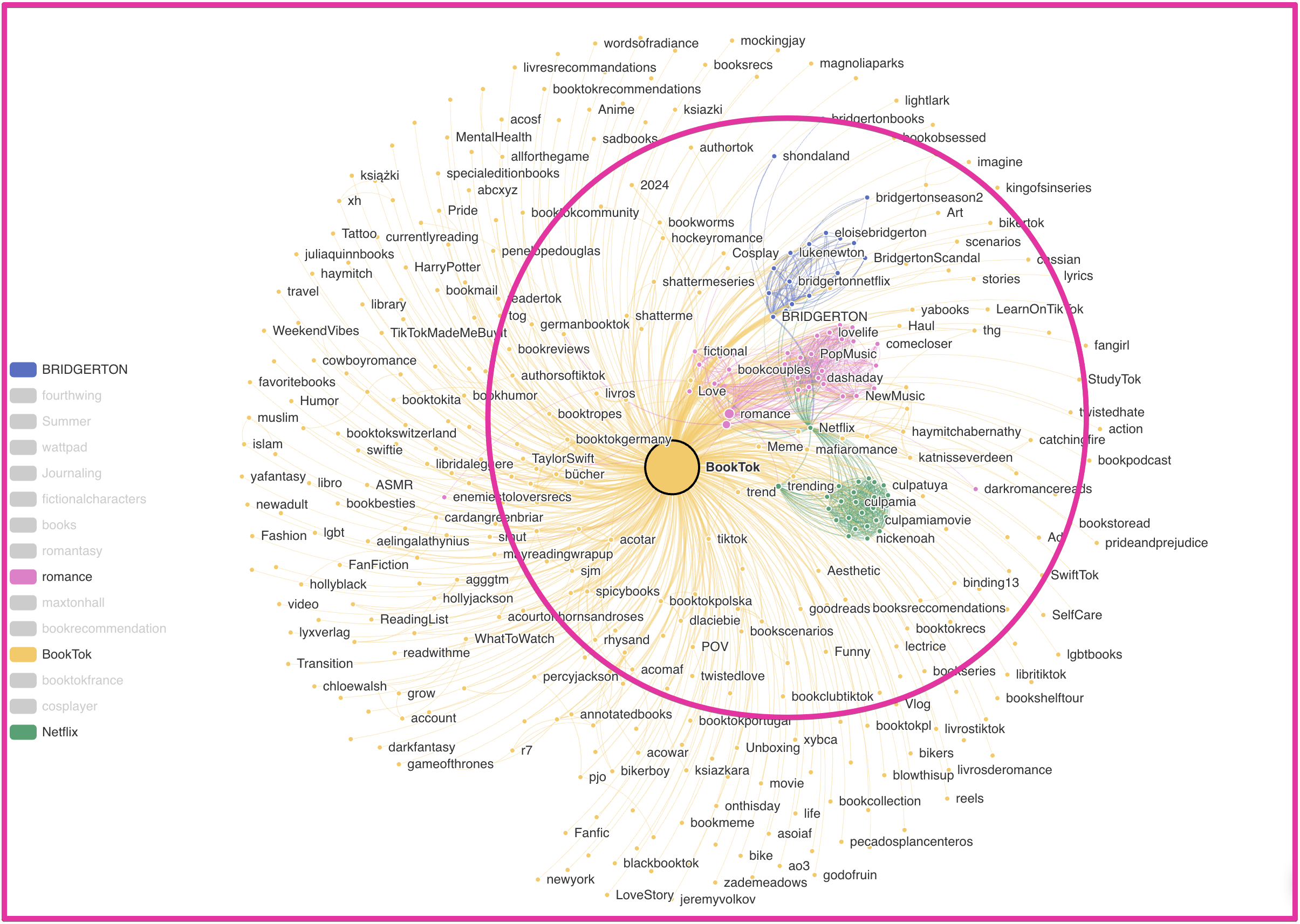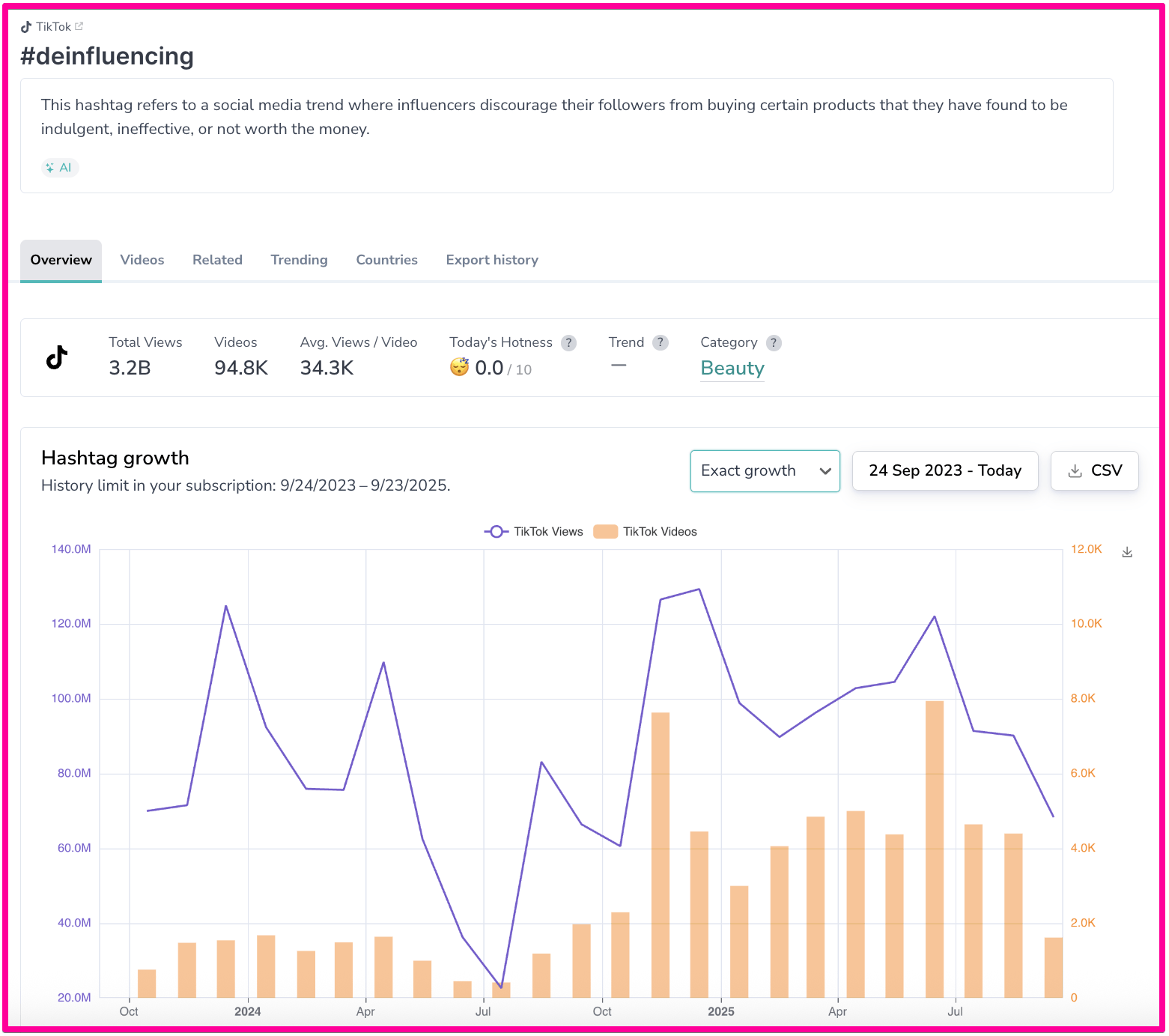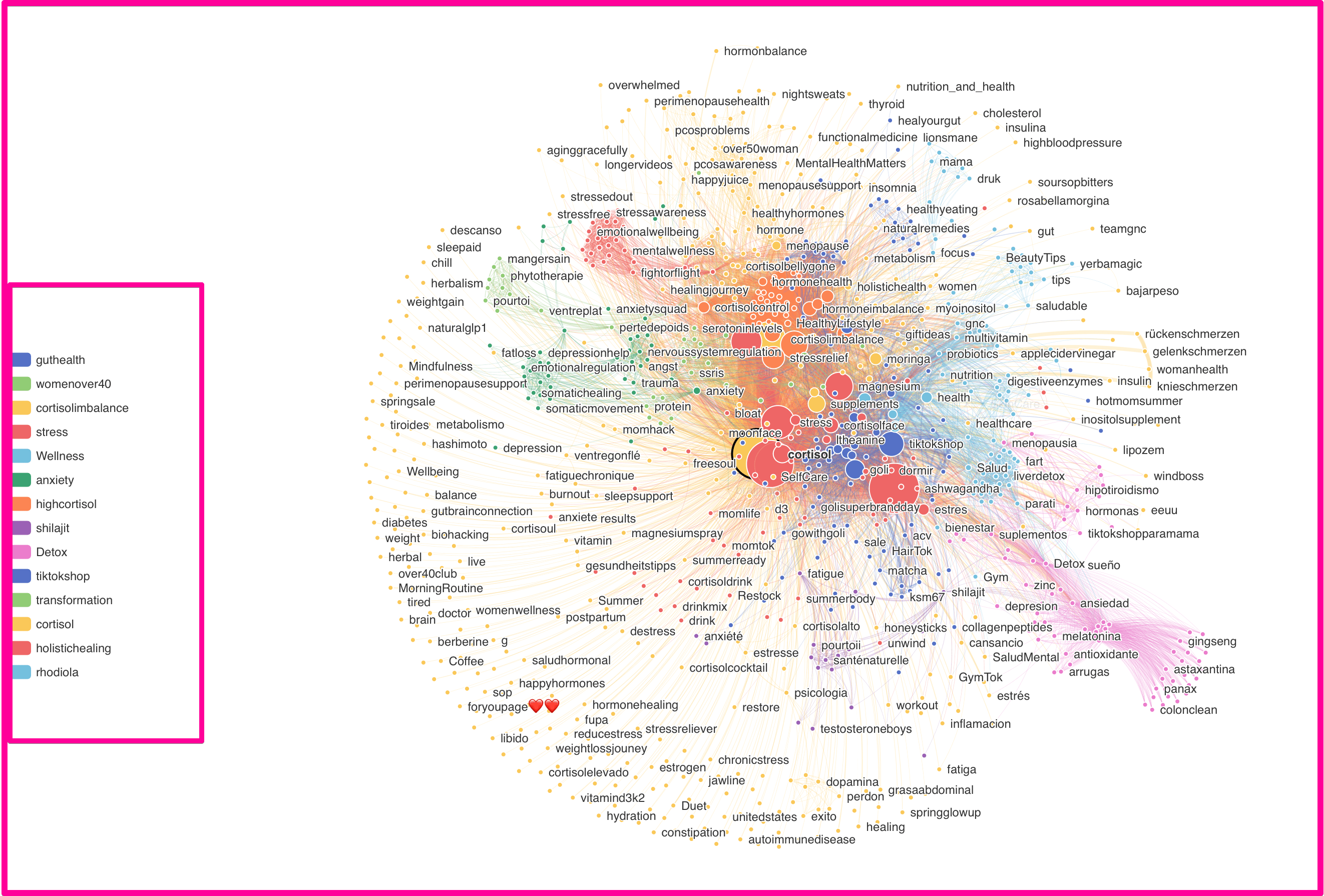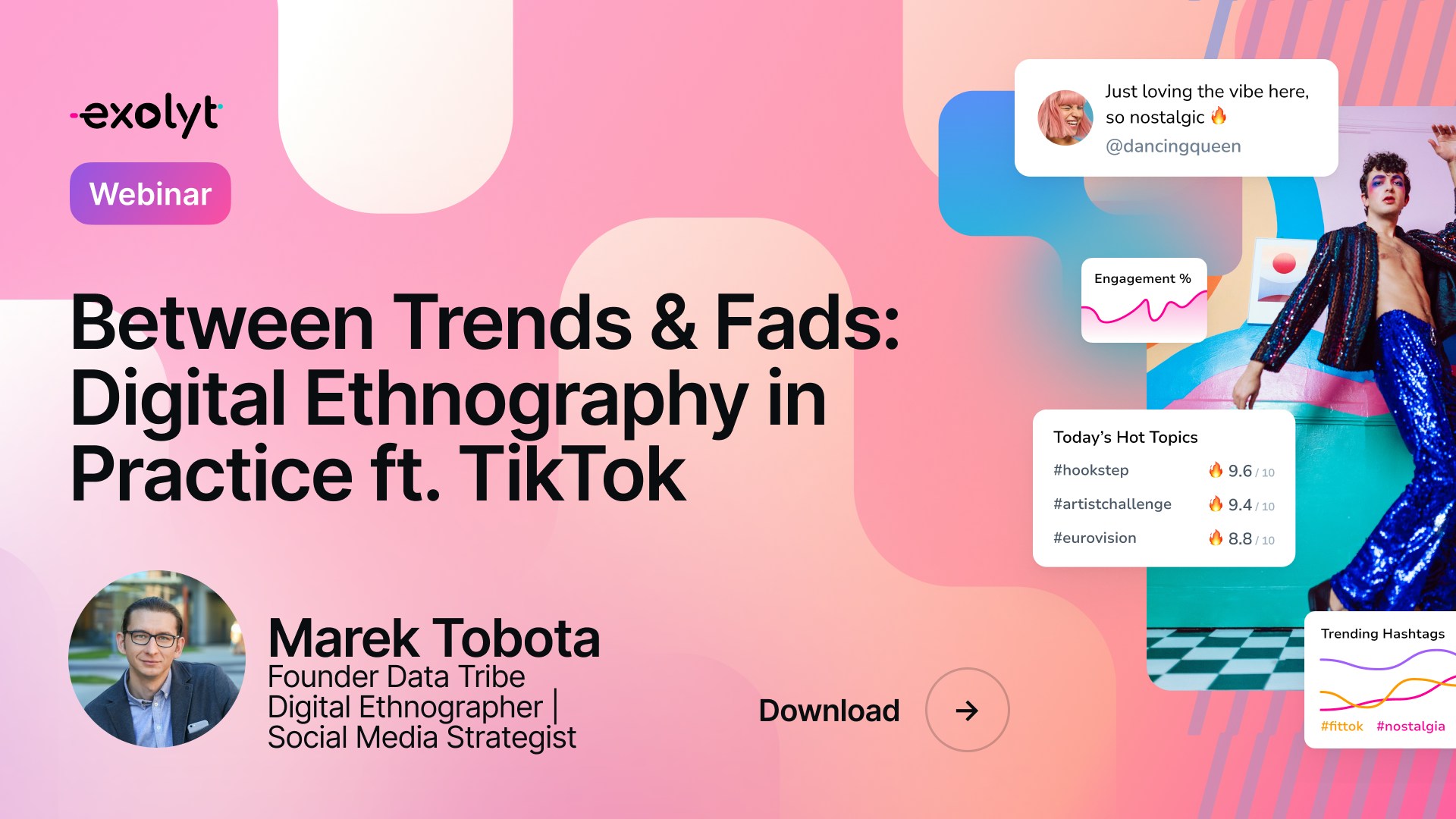In the fast-paced world of TikTok, it’s easy to confuse a fleeting viral moment with a meaningful trend. Most brands eagerly chase whatever is “trending” on social media, but in doing so, they often lose sight of what real trends actually mean. Yes, hopping on viral TikTok challenges or memes can yield short-term engagement. However, trending moments are usually ephemeral – today’s viral dance or hashtag might be forgotten next week. The real challenge (and opportunity) for marketers and brand strategists is learning to distinguish a short-lived fad from an emerging cultural trend that signals deeper shifts in consumer attitudes.
Trending vs. Trend vs. Fad: Why It Matters
- Trending = what’s visible on the surface—algorithmic spikes in attention.
- Trend = deeper, enduring shifts in behavior or values.
- Fad = a fast-burning, short-lived craze with little long-term relevance.
While these terms seem almost similar, there is a thin line between how much it impacts behaviour and culture, at what pace it builds its momentum, and how fast it disappears from action. Understanding these distinctions helps brands avoid strategic missteps—like launching expensive campaigns tied to moods destined to fade.
Trends vs. Trending: Fast Culture vs. Slow Culture
To separate trends from mere trending topics, it helps to understand the difference between fast culture and slow culture. “Fast culture” refers to the rapidly changing, short-term fads driven by social media and pop culture, whereas “slow culture” encompasses the more enduring, deeper currents of culture that evolve over longer periods. TikTok’s viral videos, hashtags, and sound bites are the epitome of fast culture – they flare up quickly and often fade just as fast. But beneath those spikes of popularity, there may lie slow-culture movements that persist and grow over time.
Trending ≠ Trend: As Kim Townend, social listening expert, puts it in an Exolyt article, “trends in isolation teach us very little, but trending topics viewed over time show us patterns and commonalities.”
In other words, a single TikTok hashtag blowing up this week might just be a blip, but if you observe related themes recurring across months or across different communities, you might be seeing an actual trend in the cultural sense. Simply looking at what's trending on TikTok isn’t enough – we must connect those viral moments to the bigger picture of slow-culture forces shaping consumer behavior.
For example, “Cozy Culture” emerged as a TikTok trend showcasing comforting aesthetics and content (think warm lighting, cozy gaming setups, or seasonal pumpkin-spice themes). On the surface, “cozy” content goes viral in seasonal waves (a fast culture phenomenon). Yet coziness also taps into a lasting consumer desire for comfort and nostalgia – a slower cultural shift.
Read more about this cultural phenomenon in our blog: How to use social listening to identify cultural trends?
Why Context Matters: Beyond the Fad and “Trendwashing”
Chasing every new TikTok craze can be tempting, but doing so blindly is a risk. Jumping on a meme or dance without understanding its context can lead to what Marek Tabota, a social strategist, calls “trendwashing” – a superficial mimicry of a trend that audiences immediately spot as inauthentic.
Everyone wants to ride the wave of a TikTok trend, but co-opting cultural signals without grasping their deeper meaning often backfires. For brands, the lesson is clear: don’t just watch trends, understand them. A trending hashtag or sound might indicate something bigger happening in your audience’s world – a shift in humor, values, or needs – and missing that context means missing the real insight.

The Real Value: Cultural Insight Over Trendspotting
According to The SI Lab’s founder, Dr. Jillian Ney, trends reflect what’s popular; cultural insight captures why it resonates—beliefs, motivations, identity shifts. They urge listening beyond metrics: asking what pattern really signifies, whose voices are visible (or missing), and how algorithms distort visibility.
This is not a tidy method—it’s a mindset. It requires embracing complexity, sitting with ambiguity, and valuing thick data (tricia wang’s term)—the context-rich stories behind social chatter. Source.
Eugene Healey: Context is Everything
Eugene Healey reminds us: draping your brand in viral aesthetics isn’t strategy—it can feel hollow. In a Guardian essay, he remarks how Gen Z’s raw, unfiltered style (e.g., “bedrotten” posts) became its own polished aesthetic—devoid of real authenticity. And when brands adopted this style of being ‘raw and unfiltered’ on social, there was nothing less authentic than multinationals with billions of dollars in market capitalisation pretending to be jaded teenagers, yet here we are.’ According to him, grasping authenticity demands understanding and surveilling culture.
Similarly, in his collaborative post with Exolyt, he shared his take on the challenges—and opportunities—of navigating TikTok’s lightning-fast content cycles. TikTok’s algorithm has transformed how we experience trends—while everything feels like a trend, not everything is worth investing in. So, one mustn’t treat trends as shortcuts to engagement; if misaligned with brand identity, trends feel lazy, not clever.
Here are some key highlights from his video:
- 𝗞𝗻𝗼𝘄 𝗪𝗵𝗮𝘁 𝗬𝗼𝘂'𝗿𝗲 𝗧𝗿𝗮𝗰𝗸𝗶𝗻𝗴
Not every trending hashtag or viral video signals a real cultural shift! Understanding the difference between a fleeting moment and a conversation that can potentially shape consumer behaviour is crucial.
- 𝗨𝘀𝗲 𝗧𝗼𝗼𝗹𝘀 𝘁𝗼 𝗙𝗶𝗹𝘁𝗲𝗿 𝘁𝗵𝗲 𝗡𝗼𝗶𝘀𝗲
Eugene emphasises the importance of social listening tools! For example, Exolyt tracks and maps related conversations, which can help to separate relevant trends from passing memes.
- 𝗠𝗮𝗽 𝘁𝗵𝗲 𝗧𝗿𝗲𝗻𝗱 𝗘𝗰𝗼𝘀𝘆𝘀𝘁𝗲𝗺
As mentioned, understanding how a trend connects to broader categories can help brands align their messaging and resources effectively, as it's important to know that a conversation will last before you commit resources to it.
- 𝗠𝗼𝘃𝗲 𝗳𝗿𝗼𝗺 𝗥𝗲𝗮𝗰𝘁𝗶𝗻𝗴 𝘁𝗼 𝗦𝘁𝗿𝗮𝘁𝗲𝗴𝗶𝘀𝗶𝗻𝗴
By identifying the deeper conversation networks, brands can make informed decisions on where to participate, with whom to collaborate, and how to build long-term content strategies.
How to Identify a Real Trend (and Not Get Blinded by Viral Noise)
Distinguishing a lasting trend from a one-hit-wonder requires a more strategic, research-driven approach. Social listening and cultural analysis are the tools of the trade here. Below are some practical steps and criteria to help separate a real trend from what’s merely trending on TikTok:
- Look for Cross-Community Connections:
A quick litmus test is to see how wide and diverse the engagement is. If a hashtag or theme pops up across multiple communities or subcultures on TikTok, it has broader significance. The more disparate groups that adopt a tag or meme over time, the more likely it is that it represents a cultural trend rather than a niche fad.
For example, if a fashion hashtag is used not only by fashionistas but also in music, gaming, and food content, it’s tapping into something culturally pervasive. In contrast, a trending topic confined to one small corner of TikTok might be gone next week.
Tip: Track a hashtag over a few months – trending fads will often burn out quickly, whereas a true trend will show up repeatedly and in varied contexts. You can also keep an eye on Exolyt Hashtag Relations Graph to understand if the sub-topics that build the momentum for the main trend appear in other related conversations, and how prevalent it is.

Source: Exolyt Hashtag Relations, eg, #BookTok
- Watch for Patterns and Common Themes:
Don’t just count views; look for recurring themes or aesthetics. Are you noticing similar vibes, messages, or visuals across different trending videos? Are certain slang terms, song clips, or styles popping up again and again? Patterns can signal a deeper movement. As one analyst notes, being very “online” and attuned to these nuances makes it easier to connect the dots and understand the bigger cultural shifts driving them.
For example, the prevalence of DIY, upcycled fashion hacks on TikTok might point to a larger trend of sustainability and anti-consumerism among youth – even if each individual video trend (thrift flips, closet tours, etc.) seems separate, they share a common value. So, look for commonalities in why people engage with certain content: is it about identity expression, nostalgia, rebellion, or community belonging? Those common threads hint at the underlying trend.
- Check Longevity and Multi-Platform Presence:
One hallmark of a genuine trend is that it sticks around and expands beyond a single platform. If something is hot on TikTok and you see echoes of it on Instagram, Twitter (X), YouTube, or in Google search queries, then it has legs beyond a passing TikTok fad. Conversely, if a phenomenon is only big on TikTok and pops up suddenly, it could be a flash in the pan.
Research how long the topic has been percolating: Has this topic or hashtag been around for more than a few weeks? Do interest spikes repeat seasonally or grow over time? A trend that has been building up steadily for a year (even with ups and downs) and still shows an upward trajectory is a strong candidate for a real cultural trend. Also, check if people are searching for it on Google or discussing it on Reddit – growing search volume or cross-platform chatter usually means the trend reflects a broader interest, not just an algorithmic TikTok fluke.

You can always refer to Exolyt for monitoring historical and current growth rate of any topic on TikTok. Exolyt's hashtag exact growth analysis provides an accurate count of how much a hashtag has grown in terms of views, posts, and engagement on a specific day overtime.
- Analyze the Why (Contextualize the Trend):
Once you’ve identified a potential trend, dive deeper to understand its context and drivers. This is where true social listening and analysis come in. Gather data on how the trend is discussed: What language do people use? What sentiments or motives are expressed?
Rather than relying solely on AI or dashboards to tell you the story, spend time qualitatively reviewing content – read comments, note user anecdotes, and observe how the trend evolves. Often, the richest insights come from seeing how users themselves interpret the trend. Group related content or conversations into themes to see the bigger picture (for example, are most people engaging in a TikTok trend for humor, or for solidarity, or as an act of creativity?).
By immersing yourself in the discussions, you can interpret not just what people are doing, but why they’re doing it that way. This context will tell you if the trend connects to a meaningful cultural narrative or if it’s just a quirky meme.
- Identify the Underlying Human Need or Behavior:
Every lasting trend is fueled by some underlying human desire, fear, or value. Ask: What need is this trend fulfilling? It could be the need for community (e.g., a hashtag that unites a subculture), for self-expression, for escapism, for authenticity, etc. Pinpointing this driver is crucial.
If you find that a TikTok micro-trend is driven by, say, a desire for body positivity or financial freedom or eco-consciousness, then you’re not just looking at one trend – you’re seeing part of a bigger cultural movement.
As trend researchers advise, understanding the behavior or unmet need that drives a trend helps you see how it fits into the broader cultural shifts. For example, the viral “#GirlDinner” trend (where users show minimalist snack-plate dinners) might seem like just a funny shareable concept, but underlying it could be a commentary on independent living or a rejection of formal meal norms – themes that connect to larger cultural conversations about lifestyle and self-care. Always connect the trend back to fundamental human stories.
You can also refer to this webinar by Marek Tobota to learn how to separate a fleeting viral moment from an emerging cultural trend that signals deeper shifts in consumer attitudes.
Throughout this process, social listening tools and analytics platforms can be invaluable. Manually keeping up with TikTok’s firehose of content is tough, but platforms like Exolyt are designed to help spot and track these trends.
For instance, Exolyt’s dashboard can show you which TikTok hashtags and sounds are trending in real time, and even highlight related hashtags or communities engaging with them. This makes it easier to validate if your “trend hunch” is really catching on widely or just in a bubble.
Remember, though, that tools provide the data — it’s up to you to add the cultural analysis on top. As one expert cautions, don’t just rely on AI to analyze the data for you with no input; you might miss the best insights that way. Instead, use the tools to gather information, then apply human curiosity and expertise to interpret the meaning.
From TikTok Fad to Cultural Trend: Examples in Action
Sometimes the difference between a fad and a trend becomes clear only in hindsight. Consider these cases:
- “Cortisol Matcha”: On the surface, just another viral wellness hack. In context, it signaled a deeper consumer trend: rising awareness of stress management and hormone health. The fad recipe was part of a broader health conversation.

Source: Exolyt - Cortisol Related Conversations on TikTok
- Patagonia’s Purpose-Led Strategy: Environmental activism is not a fad. Patagonia’s actions – from anti-consumption campaigns to consistent activism – show the power of aligning with enduring cultural values rather than transient aesthetics.
- Marimekko’s Digital Resurgence: On TikTok, Marimekko prints trended visually, but the brand capitalized by linking the spike to deeper cultural associations: Finnish heritage, sustainability, and joyful expression.
@marimekko Our Scandi friend @Pernille Rosenkilde on a dreamy summer stroll 🧡 #marimekko #unikko #ootd #ootdinspo #copenhagen #springoutfit #scarvesstyling
♬ CARNAVAL - Cavendish
These examples underscore that what’s trending on TikTok can indeed be a gateway to significant cultural insights – but only if we look beyond the surface. A trend gains power when it plugs into cultural currents (like comfort, authenticity, pride in identity, etc.), and brands that grasp those currents can respond in a way that feels genuine to audiences.
The Big Picture: Trendspotting with Cultural Insight
At the end of the day, separating a true trend from a transient craze is about keeping the big picture in focus. Marketers and strategists should remember that TikTok is a mirror of society as much as it is a source of entertainment. We live in an extremely fast-moving world, and it’s easy to get caught up in fast culture. But identifying the trends that have longevity and are worth your time and investment is more important than ever. In practical terms, that means using TikTok not just for trendy content, but as a window into your audience’s evolving culture.
By combining real-time social listening with a deeper cultural analysis, you can forecast which viral moments are harbingers of bigger shifts. This can inform everything from your content strategy to product development.
For instance, spotting a genuine trend early can help future-proof your marketing strategy or inspire a new product line, while also mitigating the risk of jumping on a bandwagon that leads nowhere. On the flip side, understanding where your focus topic fits in the cultural landscape – why people are really talking about it, how their behavior is changing, and what they expect from brands – lets you stay one step ahead of competitors in resonating with the audience.
In Conclusion, “what’s trending” is just the starting point.
The real value comes from connecting those spikes in attention to enduring cultural narratives. Trends don’t work in isolation; they are threads in a larger tapestry of social change. As a brand strategist or marketer, your job is to see the whole tapestry, not just the loudest thread. So the next time a TikTok craze catches your eye, enjoy it – but also ask, what is this really about?
By asking the right questions and leveraging social intelligence, you’ll separate the signal from the noise and turn viral hype into meaningful strategy. In a world of dashboards and data overload, this kind of qualitative, culturally informed insight is not just useful – it’s transformative for anyone looking to build campaigns with real impact.
Explore Exolyt for your TikTok research
Get started with a free 7-day trial or connect with our team to learn more about the platform's features and potential use cases.




